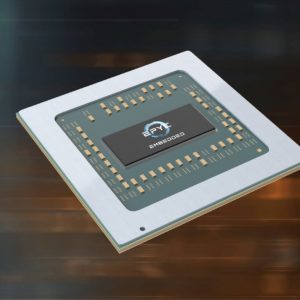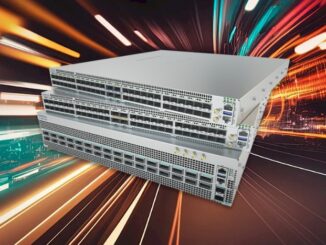
As the definition of high performance computing has morphed into some a lot broader than that just supercomputing, nearly every IT sector is adopting the technology as one of its own. And that’s creating an opportunity for companies like AMD, which these days is all about performance.
That focus is especially true in the edge and related embedded computing space, where processing demands of networking and storage modules, smart industrial appliances, autonomous vehicles, and IoT devices are growing rapidly. Some of this demand is a consequence of more and faster data, and thus, the need for speedier processing, but it’s also about the incorporation of machine learning into many of these applications.
This week at Embedded World 2019, AMD touted a number of new wins in this area, based on their AMD Ryzen Embedded V1000 and AMD EPYC Embedded 3000 processors. Both are of fairly recent vintage, having been launched in February 2018. Essentially, the two SoCs represent the embedded variants of the company’s Zen-based desktop and server chip lines, respectively.
According to Stephen Turnbull from the Embedded Solutions at AMD, the growth opportunity in this area is tremendous, but it’s a market that demands high performance computing. “Our goal is to make sure the industry has access to high-performance processors that can power anything from edge inference boxes, to extensions of a data center, to things that the industry hasn’t created yet,” he told The Next Platform.
 The AMD Ryzen Embedded V1000 is actually an accelerated processing unit (APU), combining a four-core Zen CPU with a Vega GPU on a single die. It delivers 3.6 FP16 teraflops with a TDP no higher than 54 watts. It comes with two memory channels and 16 PCIe lanes.
The AMD Ryzen Embedded V1000 is actually an accelerated processing unit (APU), combining a four-core Zen CPU with a Vega GPU on a single die. It delivers 3.6 FP16 teraflops with a TDP no higher than 54 watts. It comes with two memory channels and 16 PCIe lanes.
The V1000 is mainly used in embedded and edge devices where graphics capability is paramount – so things like medical diagnostic systems, casino gaming, digital signage, and related edge devices. The SoC can drive four 4K displays and will support 5K as well. One place the V1000 now calls home is Advantech’s SOM-5871 a communications module targeted to machine vision applications for IoT or other edge devices. The V1000 was also selected by Esaote to power the graphics and image processing in its medical diagnostics systems.
The EPYC Embedded 3000 processors is much more a datacenter chip with enterprise-class RAS and I/O support, although unlike the EPYC 7000 series for mainstream servers, the 3000 is targeted for devices and appliances that will inhabit the edge of the datacenter. The 3000 series tops out at 16 cores, which is half the number found in its more muscular sibling. Accordingly, its maximum memory capacity of 1 TB is also half of that of the 7000.
Turnbull explained the 3000 chips are primarily for storage, networking and communications equipment and other enterprise-type applications relevant for embedded form factors. In particular, that means low to mid-range storage appliances for NAS and SAN setups, as well as a variety of automated industrial applications like machine vision.
The 3000 processor is being used in iEi Puzzle network appliances for software virtual networking, which is designed to decouple networking from large banks of static network boxes. The chip is also powering Supermicro’s small form factor A+ Servers that can be employed for network security, embedded IoT computing, software defined WANs, or become the basis of a hyper-converged appliance. AMD also revealed the 3000 is being used in Congatec’s Conga-B7E3A Server-on-Module, a tiny server meant to be used for industrial vision and AI applications; the Conga-B7E3A can connect up to four Mobile PCI Express Module GPUs for this purpose.
Turnbill admits customers are still trying to figure out what edge computing means to them and what kinds of applications are relevant for their businesses. “We’ve had customers come to us and ask for extensions of their data center, enabled via an edge compute device,” he said. “We’ve had customers ask for inference devices on the edge that can help with real-time decision making and we’ve even seen some unique applications of our processors and the open source framework provided by the EdgeX foundry for security, blockchain and other applications. Bottom line, there’s numerous applications that the AMD Embedded processors can support in edge computing, and we’re continuing to work with our partners and customers to further define that.”





FP16 is kinda useless. FP32 is what everyone uses, and it will be half as fast.